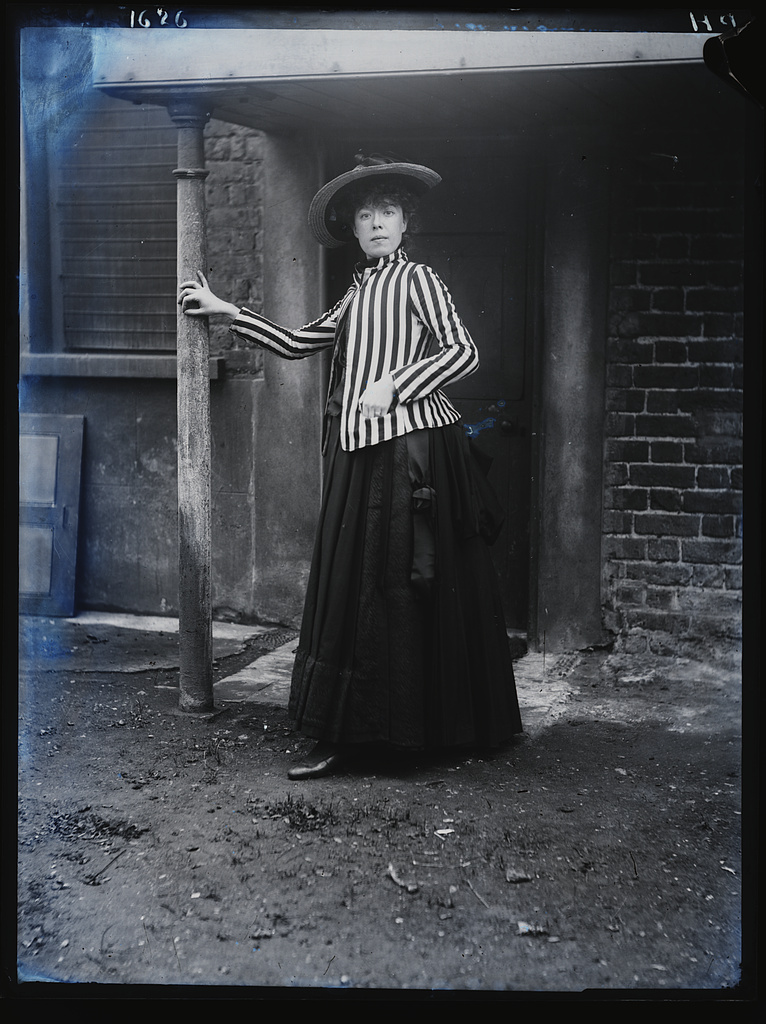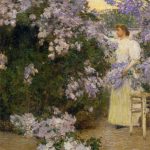
James McNeill Whistler, a name that echoes through the corridors of art history, remains one of the most influential artists of the 19th century. However, behind many great artists lies an inspiring muse, and for Whistler, that muse was Maud Franklin. Their relationship, both personal and professional, played a significant role in Whistler’s work and legacy.
Meeting Maud Franklin
James McNeill Whistler met Maud Franklin in the mid-1870s. Whistler, known for his controversial personality and innovative art, found in Maud a source of inspiration and companionship. Maud, a young artist herself, brought a fresh perspective to Whistler’s life. Their meeting marked the beginning of a profound and complex relationship.
At first, Maud posed for Whistler as a model. This collaboration soon evolved into a romantic relationship. Despite the scandal it caused in Victorian society, their bond grew stronger. Whistler admired Maud’s natural beauty and artistic talent. He often described her as his “gentle and devoted companion.”
Moreover, Whistler’s friends and contemporaries noted Maud’s influence on him. She became more than just a muse; she was his confidante and supporter. This dynamic profoundly affected Whistler’s artistic output during their time together.
Their relationship faced numerous challenges. The art world and society at large often viewed their liaison with disdain. However, Whistler and Maud remained steadfast, navigating the turbulent waters of public opinion and personal trials.
Maud Franklin as Whistler’s Muse
Maud Franklin’s role as Whistler’s muse cannot be overstated. She appeared in many of his works, often depicted with an ethereal quality. Whistler’s portraits of Maud showcase his skill and her undeniable influence on his art. Her presence brought a new depth and dimension to his work.
For example, Whistler’s “Arrangement in White and Black” series features Maud prominently. These paintings highlight her elegance and the intimate bond between artist and muse. Whistler’s ability to capture Maud’s essence reveals his deep affection and respect for her.
In addition, Maud’s influence extended beyond the canvas. Whistler’s color palette and compositional choices often reflected her personality and style. This synergy between artist and muse created some of Whistler’s most memorable works.
Furthermore, Maud’s understanding of art allowed her to contribute meaningfully to Whistler’s creative process. She provided feedback and suggestions, which Whistler valued greatly. This collaboration enriched his work, resulting in masterpieces that still captivate audiences today.
Despite her contributions, Maud’s role in Whistler’s success often goes unrecognized. Yet, her impact on his art remains undeniable. Maud Franklin, as both muse and partner, played a crucial role in shaping Whistler’s legacy.
Challenges in Their Relationship
The relationship between James McNeill Whistler and Maud Franklin faced numerous obstacles. Victorian society disapproved of their unconventional liaison. Whistler’s volatile personality also added strain to their partnership. Nevertheless, their bond endured these challenges.
Initially, society’s judgment posed the most significant hurdle. Victorian norms frowned upon relationships like theirs. Whistler, a known provocateur, faced criticism for his association with Maud. Despite this, they remained devoted to each other.
Whistler’s personality further complicated matters. Known for his fiery temper and eccentric behavior, he often found himself at odds with friends and critics. Maud, however, stood by him, offering unwavering support. Her patience and understanding provided Whistler with stability and comfort.
Additionally, financial difficulties plagued their relationship. Whistler’s extravagant lifestyle and constant legal battles strained their resources. Despite these hardships, Maud remained a steadfast companion. She managed household affairs and supported Whistler’s artistic endeavors.
Their relationship also faced personal trials. Whistler’s infidelities and erratic behavior tested Maud’s resilience. Yet, she continued to stand by him, demonstrating remarkable loyalty. Her strength and dedication played a vital role in sustaining their partnership.
Ultimately, the challenges they faced strengthened their bond. Whistler and Maud’s relationship, though fraught with difficulties, showcased their deep commitment to each other. Their story serves as a testament to the power of love and resilience.
Maud Franklin’s Own Artistic Pursuits
While Maud Franklin is best known as Whistler’s muse, she was also an artist in her own right. Her artistic journey, though overshadowed by Whistler’s fame, deserves recognition. Maud’s work reflects her unique perspective and talent.
Maud began her artistic career as a model. However, her passion for art soon led her to create her own pieces. She studied diligently, honing her skills and developing her style. Whistler supported her endeavors, recognizing her potential as an artist.
Her work often focused on everyday scenes and portraits. Maud’s keen eye for detail and composition set her apart. Her paintings, though fewer in number, reveal her deep understanding of art and aesthetics.
Despite her talent, Maud’s work did not receive the recognition it deserved during her lifetime. The art world, dominated by male artists, often overlooked female contributions. However, Whistler acknowledged her talent, often praising her work publicly.
In recent years, Maud’s art has gained more attention. Scholars and art enthusiasts have begun to recognize her contributions. Her work, though lesser-known, adds a valuable dimension to the study of 19th-century art.
Maud Franklin’s artistic pursuits, though overshadowed by her role as Whistler’s muse, highlight her talent and dedication. Her journey serves as an inspiration for aspiring artists, reminding us of the importance of recognizing and celebrating all contributions to the art world.
The Impact on Whistler’s Later Life and Work
Maud Franklin’s influence on James McNeill Whistler extended beyond their years together. Her impact on his later life and work remained significant. Whistler’s art, shaped by their relationship, continued to reflect her presence.
After their relationship ended, Whistler’s work took on a more reflective tone. The years with Maud had left an indelible mark on his creative vision. His later works often carried a sense of introspection and depth, likely influenced by their shared experiences.
Moreover, Maud’s influence on Whistler’s technique persisted. The stylistic elements she inspired continued to appear in his paintings. This lasting impact underscored the profound effect Maud had on Whistler’s artistic evolution.
Additionally, Whistler’s personal life bore the traces of his time with Maud. Their relationship, though tumultuous, had taught him resilience and perseverance. These qualities became more evident in his later years as he navigated new challenges and opportunities.
Whistler’s correspondence and writings also reflected his enduring regard for Maud. He often spoke of her with fondness and respect, acknowledging her role in his life and work. This recognition of Maud’s influence highlighted the depth of their bond.
Ultimately, Maud Franklin’s impact on Whistler extended far beyond their years together. Her presence continued to shape his art and life, leaving a lasting legacy. Their story, marked by love and creativity, remains a testament to the enduring power of artistic partnership.
Reflecting on Their Legacy
The legacy of James McNeill Whistler and Maud Franklin offers valuable lessons about art, love, and resilience. Their partnership, though unconventional, produced some of the most memorable works of the 19th century. Reflecting on their story provides insights into the nature of artistic collaboration and inspiration.
Whistler’s art, deeply influenced by Maud, showcases the transformative power of a muse. Her presence brought out the best in his work, adding depth and emotion. This dynamic reminds us of the importance of recognizing the contributions of those who inspire and support artists.
Furthermore, Maud Franklin’s journey as an artist underscores the challenges faced by women in the art world. Despite her talent, she struggled for recognition. Her story highlights the need to celebrate and acknowledge the work of female artists, both past and present.
Their relationship, marked by love and adversity, also offers lessons in resilience. Whistler and Maud faced numerous challenges but remained devoted to each other. Their story serves as a reminder of the strength and dedication required to navigate the complexities of life and art.
In conclusion, the legacy of James McNeill Whistler and Maud Franklin is a testament to the power of artistic collaboration and love. Their story, though filled with challenges, produced some of the most significant works of their time. Reflecting on their journey provides valuable insights and inspiration for artists and art lovers alike.
As Whistler himself once said, “An artist’s work is the direct result of his inner thoughts and observations. Every brushstroke reveals his soul.” Maud Franklin’s influence on Whistler’s work truly reveals the depth of their connection and the lasting impact of their partnership.




